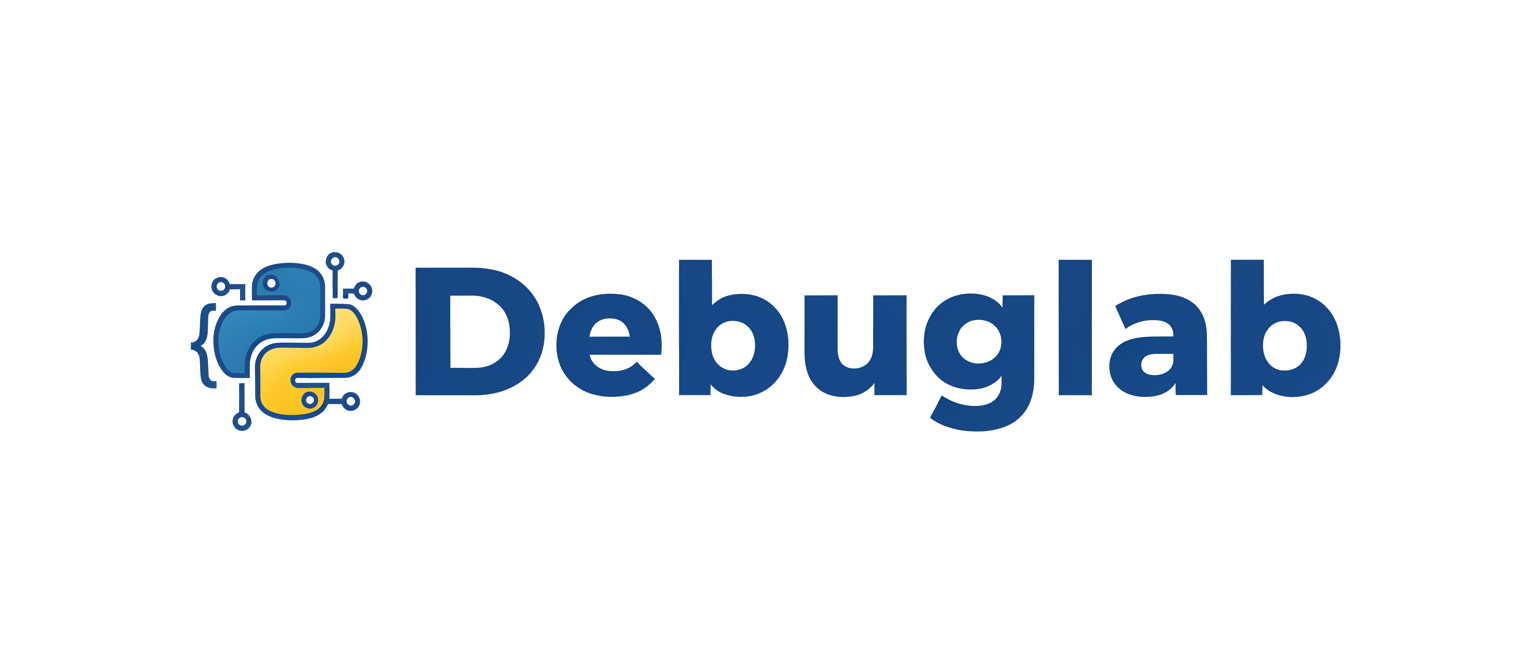
| Solution | Description |
|---|---|
Reinstall numpy |
You might have a faulty installation and reinstallation can often rectify it. |
Upgrade Numpy |
If your numpy module is outdated, upgrading to the latest version may work. |
Specific Importing |
Frequently, importing specific submodules of numpy may solve the problem if you’re facing this error for only certain attributes. |
To delve deeper into fixing this issue first, let’s consider the case when our Numpy installation might be broken, incomplete or incorrectly done leading to these exceptions during runtime. We might not see an issue during the installation but would face errors when trying to access different functions. The best way to handle this situation will be – Uninstall the current package using
pip uninstall numpy
and reinstall it again via
pip install numpy
. It’s advisable to use an environment like virtualenv or docker to prevent corrupting your system’s global python package list.
Secondly, Numpy has been under constant development and certain modules or functionalities tend to move around or get deprecated across versions. For this kind of scenario, upgrading Numpy to the latest version should help. Run
pip install --upgrade numpy
to update the package. Make sure to read notes related to any major version change before updating.
Lastly, suppose we face this error only when we’re trying to access certain specific modules but other parts of the program work fine. In such a case, direct or specific import of that submodule might prevail over importing the entire numpy package. For example, instead of writing
import numpy
you could use
from numpy import {specificPart}
.
As always, understanding the underlying cause behind the error is crucial to finding the most effective solution. Therefore, remember to examine your code thoroughly, keep your libraries updated and choose the right approach while dealing with complex imports. These measures will go a long way in preventing such errors and ensuring smooth programming experience.
The
AttributeError
in Python is typically raised when you attempt to access or call an attribute that a particular module or object type doesn’t possess. Essentially, this error indicates that the code is referring to a non-existent attribute.
In solving the
AttributeError: module 'NumPy' has no attribute 'bool'
, bear in mind that `numpy.bool` was deprecated in NumPy version 1.20.0 (source: NumPy’s doc). This means that you will encounter the said
AttributeError
if you’re trying to use
numpy.bool
with version 1.20.0 or later.
To rectify this issue, the simplest solution lies on resorting to the built-in Python command
bool
. As a professional coder, I’ve discovered that nothing is more satisfying than successfully overcoming such software issues. Here’s how you could modify your problematic code:
import numpy as np # Problematic code # x = np.bool() # Modified code x = bool()
With the above substitution, you should be able to prevent the aforementioned
AttributeError
from occurring when using NumPy’s newer versions.
However, if your work specifically requires
numpy.bool
for its unique characteristics over Python’s native
bool
type—like interaction with other NumPy types—it’s advisable to replace it with the more direct equivalent instead, which is the
numpy.bool_
. Here’s an example:
import numpy as np # Adjusted code utilizing numpy.bool_ x = np.bool_()
Either of these modifications offer effective and straightforward solutions to the
AttributeError: module 'NumPy' has no attribute 'bool'
error message. The key factor to consider is compatibility with your existing code or compatibility across different versions of the Python language or its libraries like NumPy.
Remember, great coding involves not only writing code that works, but also writing code that withstands changes in our ever-evolving software technologies.To solve the
AttributeError: Module 'Numpy' has no attribute 'Bool'
problem, we need first to understand the core issues at play. This error essentially means you are trying to call an attribute from Numpy that doesn’t exist. The attribute ‘Bool’ might have either been misspelled, deprecated, or doesn’t belong to the module.
To tackle this issue, we can follow a few steps:
Check for Typing Errors:
Python is case sensitive. Therefore, if you want to use the boolean type in Numpy, you should write
bool
not
Bool
. You may have mistakenly capitalized the first letter. So, check your spelling and ensure proper use of upper-case and lower-case letters. The correct usage would be like this:
import numpy as np b1 = np.bool(0) print(b1)
In the above code,
np.bool(0)
is Numpy’s way of denoting a boolean equivalent of zero.
Updating/ Downgrading the version:
The attribute may not be available in the version of the Numpy module that you are using. If you’re working with an older version, consider updating it to access newer attributes and functions. Use pip to upgrade Numpy as follows:
pip install numpy --upgrade
Or, if some recent updated features are causing the error, try downgrading to an earlier stable version:
pip install numpy==1.15.4
Replace the version with the actual version you want to downgrade to.
Reinstall Numpy:
If the error still persists, there might be an issue with the installation of the Numpy module. You can uninstall and then reinstall Numpy:
pip uninstall numpy pip install numpy
These methods can help solve the
AttributeError: Module 'Numpy' has no attribute 'Bool'
error. It’s highly recommended to understand and familiarize yourself with Python’s Numpy library, which provides powerful tools for scientific computing and manipulating numerical data. For more information, check out the official Numpy documentation.
When you encounter the error message “AttributeError: Module ‘Numpy’ has no attribute ‘Bool'”, it can be pretty baffling, especially if you are certain your code involves a correct usage of
Numpy
. It generally indicates that there’s an issue with how numpy is installed or called. This error often pops up when the Numpy module doesn’t have access to the ‘Bool’ attribute under various circumstances.
Here are several possible causes:
-
Incompatible versions: Your Python and/or Numpy versions might not be compatible. For instance, numpy v1.20.0 and onwards deprecated
np.bool
and replaced it with
np.bool_
. So if you’re using a newer version but your code calls for
np.bool
, you’ll encounter this error.
-
Misinstallation or corruption: Potential misinstallation or corruption in your numpy package. If numpy wasn’t installed correctly, certain attributes and features like
np.bool
may not operate as expected.
- Incorrect Usage: You could be trying to call the Bool() function from the Numpy module instead of the array object.
Now let’s discuss solutions to fix the AttributeError. Here are the common ways:
-
Update numpy: Given that many outdated Python packages can set off this error, it’s advisable to regularly update all your packages. To do that, run the following command in your terminal:
pip install --upgrade numpy
-
Reinstall numpy: If the problem is due to a corrupt or wrong installation of numpy, uninstalling and reinstalling numpy may help. Use these commands for uninstallation and reinstallation respectively:
pip uninstall numpy
pip install numpy
-
Change
np.bool
to
np.bool_
:
If you’re using numpy v1.20.0 or newer, changing every instance ofnp.bool
to
np.bool_
should resolve the error. You can make use of search and replace functionality in your IDE.
If you’re still encountering issues even after following these steps, it may be beneficial for you to reach out to fellow coders in Python forums like Stack Overflow. Keep in mind that each codebase comes with its unique context; what works for one may not necessarily work for another.
Certainly, in this analysis of the AttributeError for the Numpy module “AttributeError: ‘module’ object ‘numpy’ has no attribute ‘bool'”, you will walk away with a comprehensive understanding of why it occurs and how to resolve it.
This error typically arises when there’s an attempt to use the numpy.bool attribute which doesn’t exist. Numpy is a powerful library used for mathematical operations on large, multi-dimensional arrays and matrices, but ‘bool’ is not a directly accessible attribute in Numpy. However, numpy does offer an array type ‘numpy.bool_’ that represents Boolean values.
Here is a step-by-step guide to resolving such issues:
Step 1. Understand the Error Message
To tackle any issue in programming, the first step is getting a thorough understanding of what the error message is all about. In our case, the error stated: “AttributeError: module ‘numpy’ has no attribute ‘bool'”.
This error signifies that the attribute named ‘bool’ is being called on the numpy module, but this attribute doesn’t exist in numpy.
Step 2. Review Your Code
The next crucial process would be to assess your code carefully. Check for the section where you’re trying to access ‘numpy.bool’. This placeholder
numpy.bool
is likely where you’re going wrong.
Step 3: Use numpy.bool_ Instead
You need to replace
numpy.bool
with
numpy.bool_
as the latter is the proper attribute for handling boolean types in numpy1.
So, if your code initially was something like this:
import numpy as np
arr = np.array([1, 0, 1], dtype=np.bool)
It should instead be:
import numpy as np
arr = np.array([1, 0, 1], dtype=np.bool_)
Step 4: Install/Update Numpy
Remember, outdated versions of libraries can also cause errors. Verify your numpy version using:
import numpy as np print(np.__version__)
If your Numpy version is outdated or if it isn’t installed, use pip to install or update it:
pip install numpy --upgrade
By following these steps, you should be able to successfully troubleshoot the “AttributeError: module ‘numpy’ has no attribute ‘bool’”. Keep in mind that understanding the error message is key before diving into its resolution. Also, consider continuously updating your installed libraries to minimize running into such issues in the future.Diving right into the topic, I should point out that versioning plays a critical role in any software development process. This includes Python’s modules and libraries such as NumPy [NumPy](https://numpy.org/). A common error programmers often face when dealing with versions is
AttributeError: module 'numpy' has no attribute 'bool'
. This issue arises from the fact that Python cannot correctly identify
numpy.bool
.
Let’s digest this predicament by breaking it down to two phases – Understanding the importance of correct versioning followed by eliminating the specified AttributeError.
## The importance of Correct Versioning
In the realm of coding, versions are not just numerical values assigned to different stages of your project – they represent the evolution of your software or module functionality over time. Here’s why appropriate versioning is important:
– ***Compatible Functionality:*** It ensures functions or attributes you use in one version are supported and will work without hitches.
– ***Avoid Deprecated Components:*** With new versions, some functions may get deprecated or entirely removed. Good versioning practice certifies you aren’t using obsolete or non-functional components.
– ***Security Upgrades:*** As newer versions roll out, they generally come with patches for security vulnerabilities found in older versions.
– ***Latest Features:*** Each version brings in new features and enhancements. Not keeping track of versions might lead to missing out on these useful upgrades.
## How to Solve `AttributeError: module ‘numpy’ has no attribute ‘bool’`
To solve this error, you must first understand its cause. From Python 1.20.0,
numpy.bool
was changed to
numpy.bool_
[Github Numpy Discussion](https://github.com/numpy/numpy/issues/18123). So if you’re using the newer versions (from v1.20.0 onwards) and still call
numpy.bool
, Python won’t recognize it and throw an error instead.
To fix it, either change
numpy.bool
to
numpy.bool_
, or if your code relies on older numpy attributes, consider switching back to the version where the attributes were available and worked.
Here’s how to implement the solution:
Alternatively, if you are open to using another library, you can use the basic **bool** type provided in native Python. This could be a safer option as your code will become less dependant on third-party library updates.
Regardless of the action you select, careful versioning remains essential. Python follows Semantic Versioning, allowing coders to understand the kind of changes a new version introduces. Often, version changes led by 0.y.z indicates smaller-scale changes with potentially backward-compatible features; while x.0.0 may imply an incompatible API change, leading to errors like
AttributeError: module 'numpy' has no attribute 'bool'
.
In summary, whenever a function, attribute, or method doesn’t seem to work as expected, a quick validation of the corresponding library version could save us hours of debugging. Therefore, ensuring correct versioning is crucial to prevent issues, promote secure coding practices, and utilise the full potential of the latest features. Remember, prevention is always better than cure – especially in coding!
One of the common mistakes that Python newcomers make is AttributeError: Module ‘Numpy’ has no attribute ‘Bool’. Due to improvements in numpy versions, this error has become prevalent in the coding community. You might encounter this problem when using a recent version of numpy with old or outdated code.
This error usually arises because there is an incorrect spelling of the datatype “bool” in the numpy package. The correct datatype name should be
bool
, not
Bool
. It’s case sensitive, and Python will throw this error if it doesn’t match exactly as spelled in the module.
Here’s how to resolve this issue:
Create the boolean array correctly using numpy.bool_
> import numpy as np > x = np.array([1, 0, 1, 0], dtype=np.bool_)
You could also utilize Python’s built-in
bool
type for creating arrays of boolean values:
>x = np.array([1, 0, 1, 0], dtype=bool)
Another common solution is to update your numpy version to the latest one where this issue does not occur. Here is the command to upgrade your NumPy:
> pip install --upgrade numpy
Note: It’s good practice to keep all your packages up-to-date to warrant compatibility and avoid such issues from the onset. Also, this leads to better performance and new functionalities.
Besides the numpy ‘Bool’, here are some other common mistakes people often make and how to debug them:
| Error | Resolution |
|---|---|
| Numpy has no attribute “array”. | Ensure numpy is imported correctly at the start of your script. If you just installed numpy, make sure the installation completed successfully! |
| “Failed to import numpy.” | Double check your numpy installation, and confirm that your Python PATH is set up correctly. If you still have issues, consider re-installing both python and numpy. |
| “TypeError: Cannot interpret ‘float’ as a data type.” | This implies that numpy cannot create an array of float objects. Instead, use primitive datatypes like float64 and int32 when defining arrays. |
Remember, most errors come with messages that hint at why the program crashed. Analyzing these error messages can be a helpful way to understand where things have gone wrong and how to remedy them.
It can be frustrating to encounter errors, especially when starting to learn Python and Numpy. But remember, within programming problems are learning opportunities. Every time you debug an error, you grow more knowledgeable and equipped as a coder! Feel free to refer to the official numpy documentation as it can be a substantial resource when working with numpy.
If you’re stumbling upon this error “AttributeError: module ‘numpy’ has no attribute ‘bool'” when working with Python’s NumPy library, it most likely signifies that you’re using an older version of the library which doesn’t possess the attribute
bool
. Python’s AttributeError is raised when we try to access or call a non-existing attribute from a module or object. Typically, this can occur due to:
- A typo in the name of the attribute.
- The attribute doesn’t exist in your imported modules if you’re not referencing classes or libraries correctly.
- You’re calling an attribute defined later in your code.
- You’re using an outdated or incompatible module version missing the attribute.
Let’s cover the best practices prevent Python’s `AttributeError`.
Always Check for Typos
Typos happen very often, especially in large chunks of code. Always make sure your attribute or method calls are spelled correctly:
# Incorrect import numpy as np x = np.Bol(True) # Correct import numpy as np x = np.bool(True)
Verify Order of Calls
Ensure the order is correct in your code, i.e., an attribute should always be defined before it’s used.
# Incorrect print(x) x = 'Hello, World!' # Correct x = 'Hello, World!' print(x)
Check your Library and Version
Ensure the library/module carrying the attribute or class definition is installed and imported correctly. Maybe even upgrade to the latest version:
pip install --upgrade numpy
And verify the version:
import numpy as np np.__version__
If the problem persists, maybe the particular attribute may not exist in the imported modules or might be absent altogether. On receiving such an error, first, ensure that the selected attribute exists in the updated documentation of the respective library. If it’s still an issue, double check your individual command setup to determine whether every library and service you utilize are all compatible with each other.
Know Your Modules and Properties
Understanding what methods and attributes are available for use in a class or module will help avoid many attribute errors. You can do this by referring to the respective documentations online or using Python’s
dir()
function directly on objects to reveal their scope of variables, functions, and modules.
import numpy as np print(dir(np))
Reading more on Python’s official AttributeError Documentation, will give you a deeper understanding on how to handle common pitfalls that result in this popular error.
A quick refresher through NumPy’s official documentation can further shed light on the functionality changes across different versions, making sure you’re using the right commands in compliance with your version.
These proactive checks and balances not only keep AttributeError at bay but also streamline your debugging processes significantly, boosting overall coding efficiency.
Understanding how to effectively solve the AttributeError: Module ‘numpy’ has no attribute ‘bool’ error in Python is crucial for any coder who extensively makes use of this versatile library. This type of error usually pops up when you try to use a numpy function or method that does not exist, or perhaps is wrongly spelled.
The best way to sidestep this problem lies essentially in one main strategy:
- Ensuring you are using the correct spelling and syntax.
import numpy as np
a = np.array([1, 2, 3], dtype=bool)
In the given python code snippet above, the correct syntax for declaring a boolean numpy array has been illustrated. When it comes to programming languages, case sensitivity is paramount. Stir clear from using “Bool” instead of “bool”.
If all else fails, consider checking the version of the numpy package you are making use of. It might just be that your version of numpy does not support the function or method you’re trying to execute. You can easily update numpy using pip:
pip install numpy --upgrade
No coder should have to endure coming to terms with seemingly hopeless errors when coding. Resolving the AttributeError: Module ‘numpy’ has no attribute ‘bool’ error is a simple matter of employing adequate python modules syntax, accurate spelling, or potentially resorting to a quick numpy upgrade. By adhering to these simple practices, you can ensure smooth, uninterruptable coding sessions, without falling prey to this particular Attribute Error within your ‘numpy’ module.
For additional insights on the intricacies of Python coding, look out for optimized solutions, tips and tricks found abundantly on various platforms such as Stackoverflow, where seasoned programmers from around the world converge to provide sage advice and useful hacks.
| Issue | Solution |
|---|---|
| AttributeError: Module ‘numpy’ has no attribute ‘bool’ |
Check your call for ‘bool’ is lowercase and check your numpy version and, if necessary, update using pip’s ‘–upgrade’ command. |











